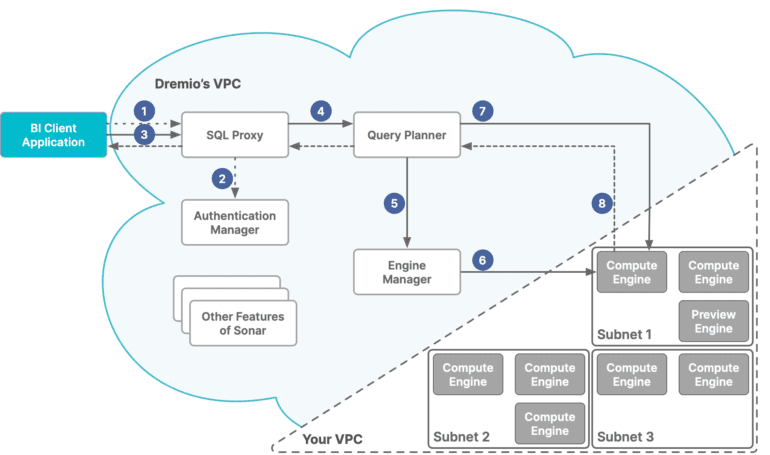TL;DR:
- Dremio introduces generative AI capabilities for its platform.
- The new features include a text-to-SQL experience for conversational querying of data and an autonomous semantic layer for data cataloging and processing.
- These capabilities simplify data handling, enabling users to explore, discover, and analyze data assets easily.
- Dremio leverages generative AI to automate SQL development, data catalog creation, and curation, streamlining data workflows.
- The integration of vector database capabilities allows for AI-powered applications without additional data silos.
- Dremio’s advancements position the company at the forefront of data handling, unlocking the true potential of data assets.
Main AI News:
Dremio, a leading open data lakehouse vendor renowned for its unified layer that seamlessly integrates data lakes and warehouses, is placing a strategic bet on generative AI. In a recent announcement, the company unveiled two groundbreaking generative AI capabilities for its platform, aimed at revolutionizing data cataloging, processing, and conversational querying of data.
The first of these capabilities is a cutting-edge text-to-SQL experience, designed to streamline the process of extracting insights from data. Instead of grappling with complex structured query language (SQL) queries, Dremio users can now leverage the power of natural language inputs. By employing a semantic understanding of metadata and data, the platform automatically converts plain-language queries into SQL, delivering accurate and desired results promptly. This innovation promises to save users valuable time and effort, allowing them to swiftly explore, discover, and analyze their data assets.
The second capability is an autonomous semantic layer powered by generative AI. Traditionally, data cataloging has been a laborious and manual task. However, Dremio’s semantic layer eliminates these challenges by autonomously learning the intricacies of users’ data. It generates comprehensive descriptions of datasets, columns, and relationships, establishing taxonomies that facilitate easy data exploration and discovery. Furthermore, this intelligent layer adapts and optimizes itself based on users’ workloads, employing reflections to accelerate data processing. By automating these processes, Dremio enables data professionals to focus on more strategic tasks rather than being bogged down by catalog creation and curation.
Tomer Shiran, the cofounder and CPO of Dremio, emphasized the significance of these generative AI capabilities, stating, “By integrating generative AI capabilities into our platform, we are accelerating data workflows and eliminating much of the manual work involved in SQL development, data catalog creation and curation, and more.” He further expressed excitement about the transformative potential of generative AI in data engineering, data science, and analytics, highlighting Dremio’s commitment to empowering users with powerful tools to unlock the true value of their data.
In addition to these groundbreaking features, Dremio is also integrating vector database capabilities directly into its lakehouse architecture. This integration empowers companies to build AI-powered applications without the need for creating additional data silos. Users can now add a specialized “vector” column type to store and search embeddings for various data elements. For example, if a user possesses a table of Amazon reviews, they can store embeddings that encode the meaning of each review alongside other attributes. Leveraging Dremio’s indexes and SQL functions, users can retrieve similar or related reviews based on their underlying meanings. This capability opens up new horizons for leveraging AI within the Dremio ecosystem.
Dremio’s text-to-SQL experience is already available to users, delivering immediate benefits. Meanwhile, the autonomous semantic layer and vector database capabilities are slated for release in the near future. With these innovative advancements, Dremio is solidifying its position as a trailblazer in the field of data handling, bringing the power of generative AI to the forefront and empowering organizations to harness the full potential of their data assets.
Conclusion:
Dremio’s strategic move to invest in generative AI and introduce new capabilities reflects the growing importance of AI-driven data handling in the market. By simplifying data workflows and automating manual tasks, Dremio empowers organizations to leverage their data assets more efficiently. This positions Dremio as an industry leader, providing users with powerful tools to uncover valuable insights and accelerate data processing. With the integration of vector database capabilities, Dremio further expands its capabilities, enabling AI-powered applications without creating data silos. This development signifies Dremio’s commitment to driving innovation and delivering transformative solutions in the rapidly evolving data landscape.

